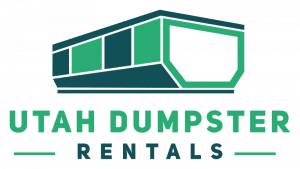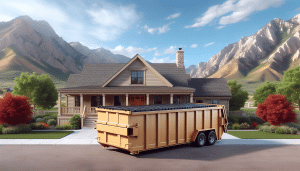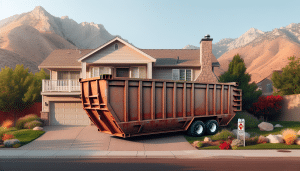Efficient waste disposal is essential, but it becomes even more critical when it comes to hazardous materials. Hazardous waste poses risks to both human health and the environment, making proper disposal a legal and moral responsibility. If you’re using a rental dumpster for waste disposal, it’s crucial to know how to handle hazardous materials correctly. In this guide, brought to you by Utah Dumpster Rentals, we’ll provide essential information on the proper disposal of hazardous materials in rental dumpsters.
Contents
What Are Hazardous Materials?
Hazardous materials, often referred to as hazardous waste, are substances that pose a threat to human health, the environment, or both. They can take various forms, including:
- Chemicals: Such as paint, solvents, pesticides, and cleaning agents.
- Flammable Materials: Like gasoline, oil, and propane.
- Toxic Substances: Including batteries, mercury-containing devices, and certain pharmaceuticals.
- Corrosive Materials: Such as acids and strong bases.
- Asbestos: Commonly found in construction materials like insulation and tiles.
The Importance of Proper Disposal
Improper disposal of hazardous materials can have severe consequences, including:
- Environmental Contamination: Hazardous materials can leach into the soil and water, causing pollution and harm to ecosystems.
- Health Risks: Exposure to hazardous materials can lead to acute and chronic health problems, including respiratory issues, skin disorders, and even cancer.
- Legal Consequences: Disposing of hazardous waste improperly can result in fines and legal penalties.
How to Dispose of Hazardous Materials in Rental Dumpsters
To ensure safe and responsible disposal of hazardous materials in rental dumpsters, follow these guidelines:
1. Identify Hazardous Materials
First, identify the hazardous materials in your possession. Check product labels and Material Safety Data Sheets (MSDS) for information on whether a substance is hazardous.
2. Separate Hazardous Materials
Keep hazardous materials separate from non-hazardous waste. Place them in clearly labeled containers that are leak-proof and tightly sealed.
3. Research Local Regulations
Research your local regulations regarding the disposal of hazardous waste. Different areas may have specific guidelines for handling and disposing of hazardous materials.
4. Contact Hazardous Waste Facilities
Contact your local hazardous waste disposal facility or environmental agency to inquire about proper disposal methods. They can provide information on drop-off locations and disposal procedures.
5. Use Hazardous Waste Services
Consider using specialized hazardous waste disposal services if available in your area. These services are equipped to handle and transport hazardous materials safely.
6. Do Not Place in Rental Dumpsters
Under no circumstances should you dispose of hazardous materials in a rental dumpster. Mixing hazardous waste with regular waste can lead to contamination and safety risks.
Examples of Common Hazardous Materials
Here are some examples of common hazardous materials and how they should be handled:
- Paint: Take unused paint to a hazardous waste facility or use up the paint entirely before disposal.
- Batteries: Recycle old batteries at designated battery recycling centers or retailers.
- Chemicals: Contact your local hazardous waste facility for guidance on chemical disposal.
- Asbestos: Asbestos-containing materials should be removed and disposed of by certified asbestos abatement professionals.
Conclusion
Proper disposal of hazardous materials is crucial to protect human health and the environment. When using a rental dumpster, it’s essential to follow local regulations and guidelines and avoid placing hazardous materials in the dumpster. At Utah Dumpster Rentals, we prioritize responsible waste disposal and encourage our customers to handle hazardous waste responsibly. Contact us at 801-877-0684 or visit rentdumpsterutah.com to discuss your waste disposal needs and receive guidance on responsible waste management.




